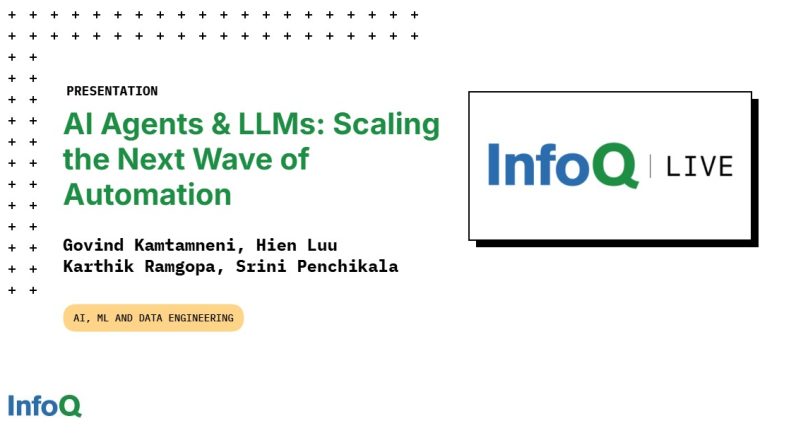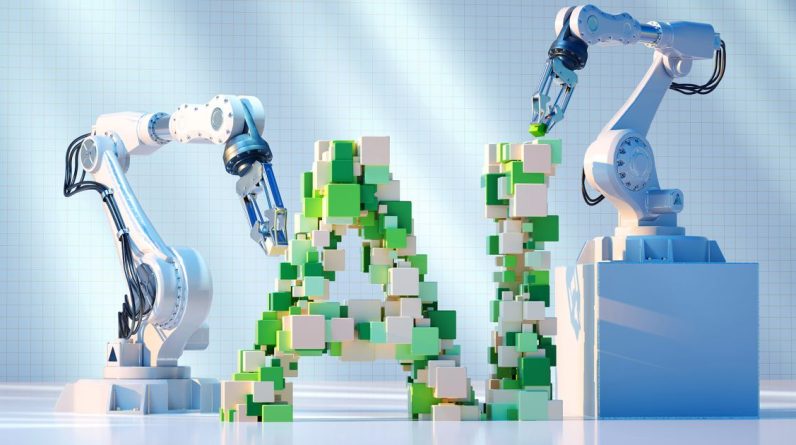
Summary
While Artificial Intelligence (AI) has been part of industrial automation for quite some time, Generative AI, a subset of AI, has only recently joined the conversation. Let’s take a look at some new applications.
ARC: Rise of Applications for Generative AI
While Artificial Intelligence (AI) has been part of industrial automation for quite some time, Generative AI, a subset of AI, has only recently joined the conversation. At the 28th Annual ARC Industry Forum, Generative Artificial Intelligence showed up in several applications and discussions.
Generative AI refers to a subset of AI that can create new text, pictures, video or audio based on what it already “knows.” Most people have already heard of and used ChatGPT, one common example of a generative AI tool. Talk of Generative AI took a variety of forms, including a new book, a software assistant from Seeq, and a new model of education championed by Ethos Insights.
The Definitive Guide to Generative AI for Industry
Industrial software maker Cognite discussed its new book, The Definitive Guide to Generative AI for Industry, which explicates and defines how generative AI applies in industry. Transformation leaders can read the book to see tools, insights and case studies about how to accelerate AI innovation and reduce time to value of digital transformation initiatives. The book is available either as a hard copy or as a free download.

“Safe, secure, hallucination-free generative AI is critical to paving the road to sustainable and profitable global energy supply and manufacturing excellence. However, industrial organizations can only leverage generative AI successfully by solving the industrial data problem first,” said Girish Rishi, CEO at Cognite. “This is the moment Cognite was built for, and The Definitive Guide to Generative AI for Industry provides a comprehensive how-to for transformation leaders looking to drive actual bottom-line impact.”
Seeq AI Assistant: Helping users learn faster and do more
Seeq, provider of advanced analytics for process manufacturing industries, developed and now offers the Seeq AI Assistant, which has generative AI integrated seamlessly into the company’s software. The new technology is already helping more than 50 customers with onboarding, training, upscaling, coding and more.

“The Seeq AI Assistant is described as ‘one AI assistant for all your workflows,’” explained Andres Barbaro, VP of Software Engineering at Seeq. “We have customers using it in a variety of industries, such as pharmaceutical, energy, chemical, and oil & gas.”
To use the built-in AI, an engineer just needs to type a question or comment starting the conversation; then, the Seeq AI Assistant will answer. If the engineer had a question about how to perform a certain function, in the past, he or she would have to look for information online or reach out to a colleague or to a Seeq Analytics Engineer. With the Seeq AI Assistant, feedback is instant. This can be particularly useful when training new employees. It can take a lot of time and effort to get new hires up to speed with training videos and direct supervision, but the Seeq AI Assistant can help with that. The Seeq AI Assistant even offers canned questions to help get the conversation going if the user isn’t sure what to ask.
“We see the Seeq AI Assistant as having three stages. Stage one is ‘Learn more’ wherein the software is the engineer’s guide, providing information about how to do tasks,” Barbaro said. “Stage two is ‘Do more,’ which turns the GenAI tool into the engineer’s helper. The user can ask the Seeq AI Assistant to actually perform a task.”
Here’s one example of a task that users can ask the Seeq AI Assistant to do. Data Lab, the data science component of Seeq’s software used for integrating more advanced analytics, uses Python. Because many engineers are not developers, Python can seem out of reach. However, the Seeq AI Assistant can not only generate code but also evaluate code a user asks about and explain what it does. This further lowers the barrier for entry for engineers to use Python and Data Lab without a computer science background.
From initial idea to proof of concept to development, it took about a year to establish the Seeq AI Assistant as it is now. However, there’s more to come. “We are still working on implementing stage three, ‘the scale your expertise stage,’ which will involve the Seeq AI Assistant’s providing suggestions about what to do next or what to prioritize,” Barbaro explained.
Ethos Academy: Generative AI for young people
Generative AI is also making waves in education for children in junior high and high school. While concerns about how technology impacts children during their formative years have circulated among parents, educators and thought leaders for many years, some early adopters see advancing technology as an opportunity to improve the educational experience for children.
Ethos School, an online school committed to transforming education for students around the world, is harnessing new technologies, especially chat GPT, to give learners a competitive advantage. Established in 2017, the asynchronous learning platform offers more than 100 courses for students in grades 4-12. Courses are put together with the most up-to-date technology to give students a leading edge in today’s changing world. 100% of the school’s faculty has or is working toward a graduate degree, and the school boasts an 80% AP test pass rate, compared with the 60% national average. The combination of pre-recorded sessions and live sessions is designed to give students the flexibility to pursue sports and arts without sacrificing crucial live academic discourse.

“Whether we like it or not, AI, is coming,” said Josh Thomason, executive director of Ethos. “You can’t control Chat GPT, but you can bring order,” “When Chat GPT hit, English teachers thought it was the end of writing, much like what math teachers said about calculators.”
Derek Wilson, a faculty member at Ethos, agrees. “Generative AI is a calculator for the humanities,” he said.
Imagine a student is studying for a calculus test at 11 p.m. the night before the exam, and he or she simply cannot remember how to solve a problem. Obviously, he can’t call or email the teacher at that hour. TrekAI, which Ethos developed in-house, can help. The student can just type his question and receive an instant answer from TrekAI, which has been programmed to know the curriculum.
TrekAI can perform a variety of functions to help both students and teachers. Here are just a few:
- Rubrics: Students will be able to upload a paper or project and receive feedback from TrekAI regarding whether they have remembered to include all the necessary parts of any given assignment. It might take a teacher several hours to go through 28 term papers to tell students to give initial feedback. But TrekAI can save instructors that extra step by giving the student feedback like: “You forgot to include a works cited list” or “Your submission was supposed to be at least five pages.”
- Brainstorm: If a student is having trouble deciding upon an idea for a project or a paper, he or she can “chat” with TrekAI for inspiration. For example, they might discuss topic ideas for a history presentation.
- Debate: Some students learn through argumentation. TrekAI can take the opposing point of view on, for example, an ethical dilemma, and have a debate with the student.
- Character: Users can tell TrekAI to take on the personality of a character in history. Because TrekAI understands the life and history of an individual, they can talk to them as if they were that person.
- Tutor: TrekAI can tutor students because it’s programmed to know the curriculum.
- World language vocabulary: Students can practice conversing in more than 100 languages.
At the heart of Ethos and TrekAI is a concept Thomason calls “personalized learning.” Thomason explained, “What the personalized learning model does is take into the account the strengths and weaknesses of the individual and give them an appropriate program that goes at the pace that’s right for them.” Thomason used an example to describe how the personalized learning model works. He pointed out that if Einstein were to take one of Ethos’ calculus classes, he wouldn’t need the typical 10 months to master the content, so TrekAI would allow him to move more quickly through the content.
Development isn’t over yet for TrekAI. In the future, for example, students will not only be able to type questions but also converse with the AI tutor verbally. That will be particularly useful for practicing world languages.
TrekAI “It’s important for schools and other organizations that begin to adopt generative AI to realize this isn’t the end,” Thomason said. “We use AI to bring personalized learning at scale to students. That will require us to continue to build, but you have to start somewhere. I don’t think physical schools are going away, but I think their purpose will shift from batch learning to community engagement.”
Conclusion
Generative AI has taken off in the past several months and shows no sign of stopping. As we’ve seen, it has made numerous appearances in industrial automation, education and academic literature. AI will continue to be researched at a federal level, as evidenced by the Biden administration’s FY2025 budget, which allocates $3 billion “to responsibility develop, test, procure and integrate transformative AI applications across the federal government.”
The ARC European Leadership Industry Forum will be held May 6-8, 2024 – Sitges (Barcelona), Spain. Its theme is “Managing Digital Transformation in the Age of AI, Open Architectures and Sustainability.”
Did you enjoy this great article?
Check out our free e-newsletters to read more great articles..
Subscribe








